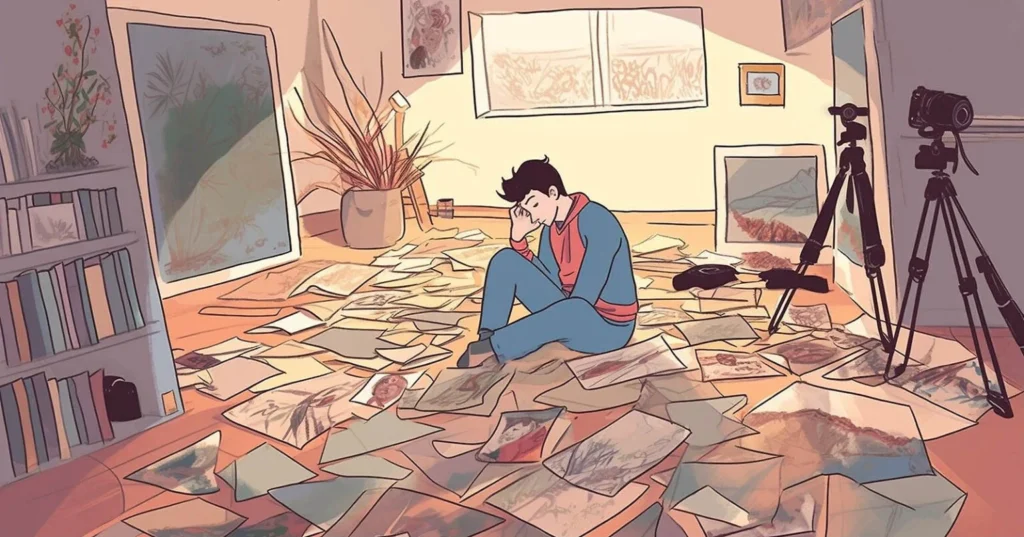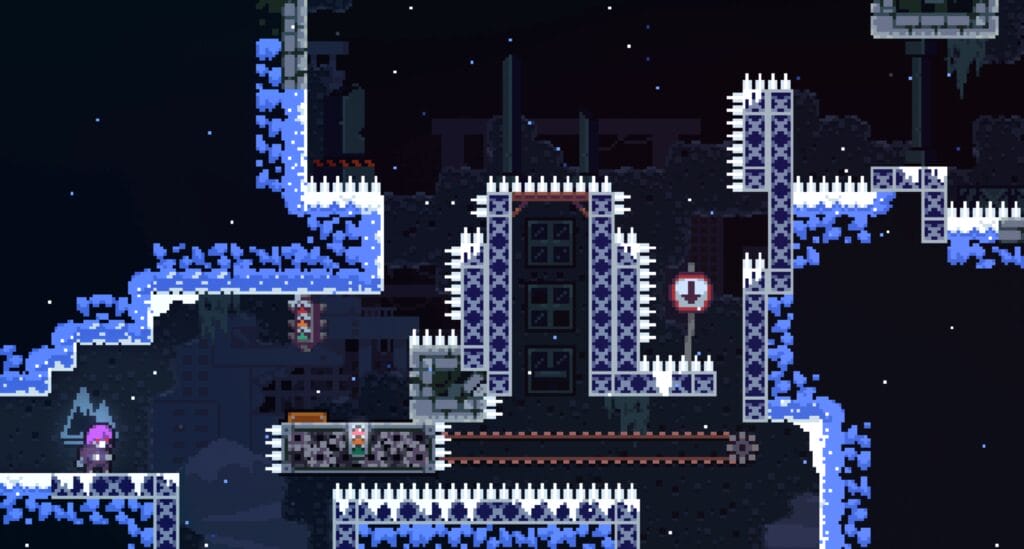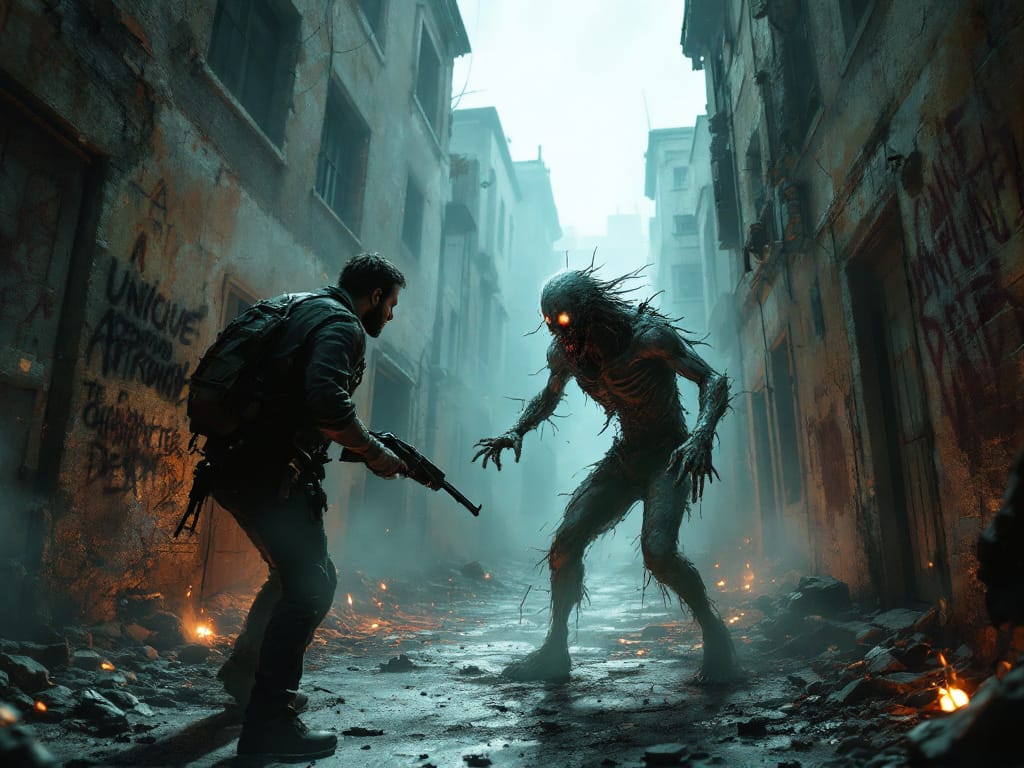Indie game design refers to the creation of video games by independent developers or small teams, without the financial backing or support of a major game publisher. In recent years, indie game design has experienced a significant rise in popularity and recognition within the gaming industry. This growth can be attributed to several factors, including the accessibility of game development tools, the rise of digital distribution platforms, and the increasing demand for unique and innovative gaming experiences.
The impact of indie game design on the gaming industry cannot be overstated. Indie games have brought fresh ideas and unique perspectives to the table, challenging the conventions of mainstream game design. They have pushed boundaries, experimented with new gameplay mechanics, and explored unconventional themes and narratives. This has not only revitalized the industry but also inspired larger game studios to take risks and think outside the box.

Contents: The Creative Process Behind Indie Game Design

Indie game definition
The term “indie game” refers to a video game that is developed and published independently, often by a small team or even a single individual. These games are characterized by their creative and unique concepts, as well as their ability to experiment with gameplay mechanics, storytelling, and art styles. Indie games are typically created without the financial backing of a major publisher, which gives the developers freedom to explore ideas that might not be commercially viable for larger companies. The independent nature of these games also allows for a closer connection between the developers and the players, as they often engage in open and transparent communication through online forums and social media platforms.
One of the defining features of indie games is their emphasis on creativity and artistic expression. Because indie developers have more freedom to take risks and explore unconventional ideas, they often create games that challenge traditional gaming conventions and push the boundaries of what is considered “fun” or “playable”. This level of experimentation has resulted in a wide range of unique and innovative indie titles that have gained recognition and praise within the gaming community.
Another key aspect of indie games is their accessibility and inclusivity. Independent developers often prioritize making their games available on multiple platforms and keeping the price point affordable, allowing a wider audience to engage with their creations. This focus on accessibility also extends to the themes and narratives explored in indie games, which often tackle a diverse range of topics that may not be commonly seen in mainstream titles. This enables players to experience different perspectives and explore deeper themes and issues in a medium that is traditionally considered for entertainment purposes.
Overall, the definition of an indie game goes beyond just the financial independence of its development and publishing. It encompasses the spirit of creativity, artistic expression, and inclusivity that sets these games apart from their mainstream counterparts. The indie game scene continues to thrive and evolve, providing a platform for innovative and diverse games that push the boundaries of what is expected in the gaming industry.
Make an indie game
An indie game is an exciting and challenging endeavor that requires a high level of creativity, passion, and dedication. At its core, an indie game is a video game created by a small team or an individual developer, usually without the support or funding of a large game publisher. This freedom allows indie developers to create unique, innovative, and artistic games that may not fit into the mainstream gaming industry. The process of making an indie game involves several key stages, including concept development, design, programming, and testing.
The first step in creating an indie game is concept development, where the game idea is brainstormed, refined, and fleshed out. This involves identifying the game’s genre, setting, mechanics, and overall experience. The concept should be original, engaging, and have the potential to captivate the target audience. Once the concept is solidified, the design phase begins. This involves creating detailed sketches, storyboards, or 2D/3D models to visualize the game’s aesthetics, characters, and environments. The design phase also includes outlining the gameplay mechanics, level design, and progression systems.
After the design phase, the programming stage comes into play. This is where the game’s mechanics, interactions, and functionality are implemented using programming languages and game development tools. The programming stage is crucial, as it brings the game design to life and allows players to interact with the game world. Throughout the development process, indie game developers often face technical challenges and constraints due to limited resources and budget. However, these limitations can also drive innovation and creative problem-solving.Once the game is programmed, thorough testing is essential to ensure a smooth gaming experience. This involves playtesting the game to identify bugs, glitches, and usability issues that need to be fixed. Testing also includes balancing the game’s difficulty, pacing, and overall enjoyment factor. After the game is thoroughly tested and refined, it’s ready to be released to the public.
Making an indie game requires not only technical skills but also a deep understanding of game design principles, storytelling, and player engagement. It is no small feat, and indie developers often wear multiple hats, taking on roles in programming, art, sound design, marketing, and more. However, the reward of creating a unique and personal game that resonates with players is a fulfilling experience for many indie game developers.

The Importance of Creativity in Indie Video Game Design
One of the key factors that sets indie games apart from mainstream games is their emphasis on creativity. Indie game designers have the freedom to explore their own ideas and visions without the constraints imposed by publishers or market demands. This creative freedom allows them to take risks, experiment with new gameplay mechanics, and create unique gaming experiences that resonate with players.
Creative thinking is essential in game design as it allows designers to come up with innovative solutions to problems and challenges. It enables them to think outside the box and find new ways to engage players. By incorporating creative elements into their games, indie developers can create memorable experiences that stand out in a crowded market.
There are numerous examples of creative indie games that have made a significant impact on the gaming industry. Games like “Braid,” “Journey,” and “Undertale” have received critical acclaim for their innovative gameplay mechanics, thought-provoking narratives, and unique art styles. These games have demonstrated that creativity is not only important in indie game design but also a driving force behind its success.

The Role of Inspiration in the Creative Process of Indie Game Design and game designers
Inspiration plays a crucial role in the creative process of indie game design. It is the spark that ignites the imagination and fuels the creation of new ideas and concepts. Indie game designers find inspiration from a variety of sources, including other games, movies, books, art, and real-life experiences.
Inspiration can come from anywhere and at any time. It can be a fleeting moment of insight or a gradual accumulation of ideas over time. Regardless of its source, inspiration is what drives indie game designers to create something unique and meaningful.
Staying inspired throughout the game design process is essential for maintaining creativity and motivation. Indie game designers often face challenges and setbacks that can dampen their enthusiasm. By seeking out new sources of inspiration, whether it be through research, exploration, or collaboration with others, designers can keep their creative juices flowing and overcome obstacles.

The Art of Storytelling in Indie Game Design
Storytelling is an integral part of indie game design. It adds depth and meaning to the gaming experience, allowing players to become emotionally invested in the game world and its characters. Indie game designers have embraced storytelling as a powerful tool for creating immersive and engaging gameplay experiences.
There are various ways in which indie game designers incorporate storytelling into their games. Some use traditional narrative structures, with well-defined characters, plotlines, and dialogue. Others take a more abstract approach, using symbolism and metaphor to convey their message. Regardless of the approach, storytelling adds an extra layer of depth to indie games, making them more than just interactive experiences.
Examples of indie games with strong storytelling elements include “Gone Home,” “Firewatch,” and “What Remains of Edith Finch.” These games have been praised for their compelling narratives, memorable characters, and thought-provoking themes. They demonstrate how storytelling can elevate the gaming experience and create a lasting impact on players.
The Power of Collaboration in Indie Game Design
Collaboration is a powerful tool in indie game design. It allows designers to pool their skills, knowledge, and resources to create something greater than the sum of its parts. By working with a team, indie game designers can bring their ideas to life more effectively and efficiently.
Collaboration brings diverse perspectives and expertise to the table, fostering creativity and innovation. It allows designers to bounce ideas off each other, provide feedback and support, and challenge each other’s assumptions. This collaborative process often leads to the creation of more polished and well-rounded games.
There are numerous examples of successful collaborations in indie game design. Games like “Celeste,” “Cuphead,” and “Ori and the Blind Forest” were all created by small teams of developers who worked together to bring their visions to life. These games have received critical acclaim for their gameplay mechanics, art styles, and overall quality, showcasing the power of collaboration in indie game design.

The Challenges of Indie Game Design: Overcoming Creative Blocks
Like any creative endeavor, indie game design comes with its fair share of challenges. One common challenge that indie game designers face is creative blocks. These blocks can manifest as a lack of inspiration, a loss of motivation, or a feeling of being stuck in a creative rut.
To overcome creative blocks, indie game designers can employ various strategies. Taking breaks, seeking out new sources of inspiration, and engaging in activities unrelated to game design can help refresh the mind and spark new ideas. Collaborating with others and seeking feedback can also provide fresh perspectives and insights.
Perseverance is key in overcoming creative blocks. Indie game designers must be willing to push through challenges and setbacks, even when things seem impossible. By staying committed to their vision and maintaining a positive mindset, designers can overcome creative blocks and continue to create innovative and impactful games.
The Role of Technology in Indie Game Design
Technology has played a significant role in the rise of indie game design. The accessibility of game development tools, such as game engines and software, has made it easier for independent developers to create games without the need for extensive programming knowledge. This has democratized game development and opened up opportunities for aspiring designers.
Technology has also enabled indie game designers to explore new possibilities and push the boundaries of what is possible in game design. Virtual reality, augmented reality, and other emerging technologies have allowed designers to create immersive and interactive experiences that were once only possible in the realm of science fiction.
However, technology also presents challenges for indie game designers. The rapid pace of technological advancements means that designers must constantly adapt and learn new skills to stay relevant. Additionally, the reliance on technology can sometimes overshadow the creative aspects of game design, leading to a focus on technical prowess rather than innovative ideas.

The Importance of Playtesting in Indie Game Design
Playtesting is a crucial part of the game design process, regardless of whether it is indie or mainstream. It involves gathering feedback from players and using that feedback to refine and improve the game. Playtesting allows designers to identify flaws, balance gameplay mechanics, and ensure that the game is enjoyable and engaging.
In indie game design, playtesting takes on even greater importance. Independent developers often have limited resources and time constraints, making it essential to get things right the first time. Playtesting helps identify potential issues early on, allowing designers to make necessary adjustments before releasing the game to the public.
There are numerous examples of successful indie games that underwent extensive playtesting. Games like “Super Meat Boy,” “Spelunky,” and “Stardew Valley” were all refined through rigorous playtesting processes. This attention to detail and commitment to quality has contributed to their success and popularity among players.
The Business of Indie Game Design: Balancing Creativity and Profitability
While indie game design offers creative freedom, it also presents unique challenges when it comes to balancing creativity and profitability. Independent developers often have limited budgets and resources, making it essential to find a balance between creating a unique and innovative game and making a profit.
One strategy for achieving this balance is to focus on niche markets. By targeting a specific audience with unique interests and preferences, indie game designers can create games that stand out in a crowded market. This allows them to differentiate themselves from larger studios and attract a dedicated fan base.
Marketing and promotion are also crucial in indie game design. Independent developers must find creative ways to promote their games and reach their target audience. This can involve leveraging social media, attending gaming conventions, partnering with influencers, or seeking coverage from gaming media outlets.
Conclusion: The Future of Indie Game Design and the Importance of Breaking the Mold
The future of indie game design looks promising. The continued growth of digital distribution platforms, the accessibility of game development tools, and the increasing demand for unique gaming experiences all point to a bright future for independent developers.
However, in order to thrive in an increasingly competitive market, indie game designers must continue to push boundaries and break the mold. They must embrace creativity, seek out new sources of inspiration, collaborate with others, and stay committed to their vision. By doing so, they can continue to create innovative and impactful games that challenge the conventions of mainstream game design and shape the future of the gaming industry.
If you want to read more contents on Indie game design don´t forget to check our blog.
Frequently Asked Questions ( FAQ) Indie Game Design
Q: What is indie game development?
A: Indie game development refers to the process of creating video games independently, usually by a small team or a single developer, without the financial and creative support of a larger game development company.
Q: How do I become an indie game developer?
A: To become an indie game developer, you need to have a passion for making games and learn the necessary skills, such as programming, game design, and art. You can start by learning game development tools and resources, joining online communities, and creating your own games.
Q: What are the pros and cons of indie game design?
A: The pros of indie game design include creative freedom, the ability to explore unique ideas, and the potential for financial success. However, the cons include limited resources, a small budget, and a higher level of risk compared to working for a larger game development company.
Q: What are some of the best indie games of all time?
A: Some of the best indie games of all time include “Braid,” “Minecraft,” “Undertale,” “Stardew Valley,” “Super Meat Boy,” “Celeste,” “Inside,” “Limbo,” “Journey,” and “Fez.”
Q: How much does it cost to develop an indie game?
A: The cost of developing an indie game can vary greatly depending on the scope and complexity of the game. It can range from a few thousand dollars for a small, simple game to several hundred thousand dollars or more for a larger, more complex game.
Q: How do I create successful indie games?
A: To create successful indie games, you need to focus on creating a unique and compelling gameplay experience, market your game effectively, engage with your audience, and continuously iterate and improve your game based on player feedback.
Q: What is the definition of an indie game?
A: An indie game, short for independent game, is a game developed by an individual or a small team without the financial and creative support of a larger game development company. Indie games often emphasize creativity, innovation, and unique gameplay experiences.
Q: What are some of the popular game engines for indie developers?
A: Some popular game engines for indie developers include Unity, Unreal Engine, Godot, GameMaker Studio, and Construct. These engines provide tools and resources to create and develop games more efficiently.
Q: What are the challenges faced by indie game developers?
A: Indie game developers face challenges such as limited budgets, marketing and distribution difficulties, resource constraints, and the need to wear multiple hats, taking on various roles and responsibilities within the development process.
Q: Are 3D games more challenging to develop for indie developers?
A: Developing 3D games can be more challenging for indie developers compared to 2D games. It requires more complex technical skills, additional resources for assets and animations, and a higher level of optimization to ensure smooth performance.
Q: What are some of the cons of indie game design?
A: Some of the cons of indie game design include limited financial resources, marketing and promotion challenges, potential lack of exposure and recognition, and the risk of failure due to competition from larger game development companies.






















